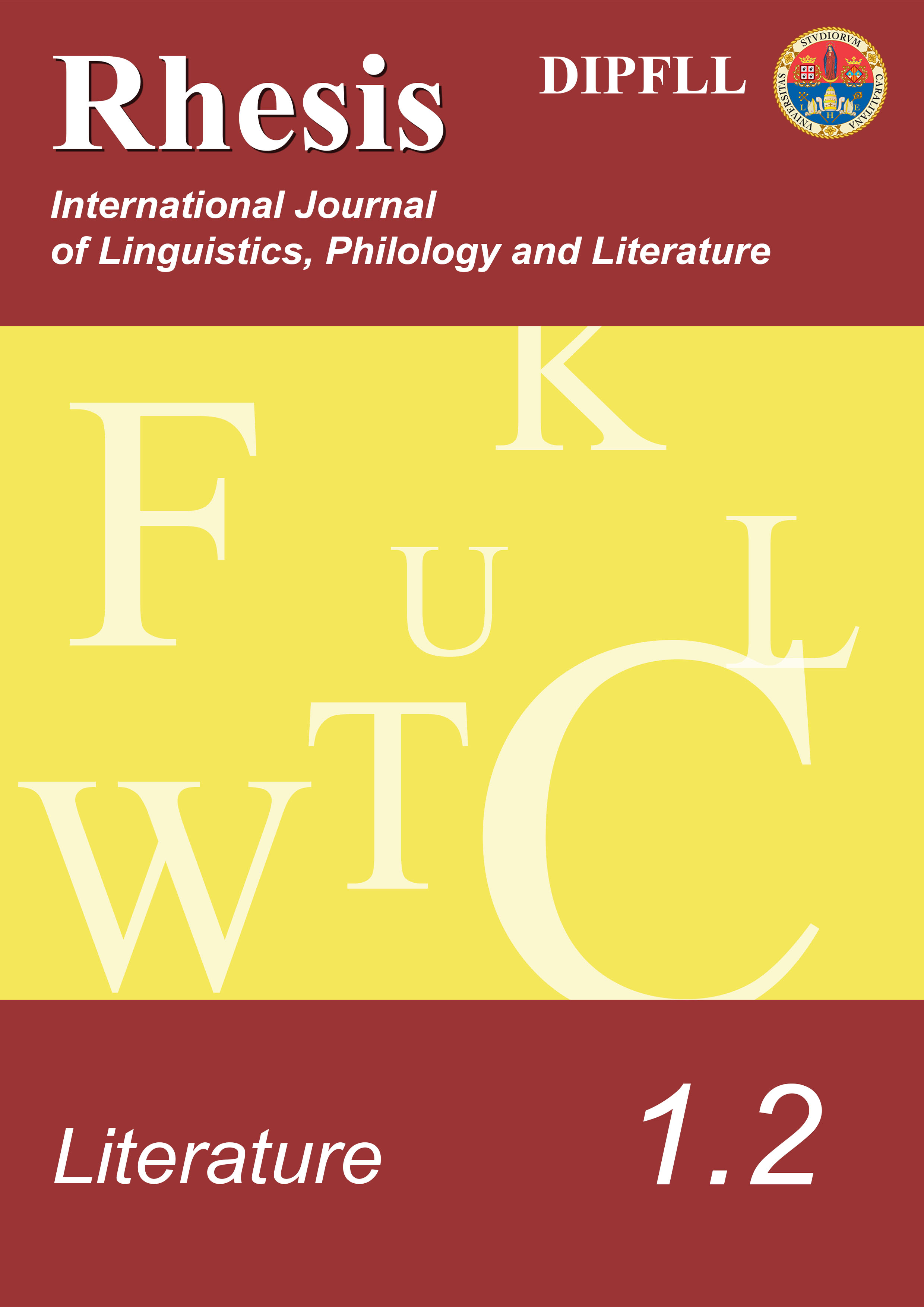From Dream to Despair: The Ironies of the Great Migration in William Attaway’s Blood on the Forge
Abstract
Often assimilated to «urban realism» of the 1940s, William Attaway’s Blood on the Forge resists such a classification. Unlike the violent modes of protest literature wherein the individual confronts headlong the white racist system, Attaway uses irony to subvert the racist determination of African American subjectivity. The novel dramatizes the trauma of racism and segregation with which the Moss brothers are confronted. In their attempt to escape from the sharecropping system and its economic and racial oppression, Attaway’s protagonists leave rural Kentucky (South) for the steel mill town in the North. Instead of the better future such a move might imply, Attaway’s characters suffer and they are either crippled or killed at the end of the novel. This article argues that the condition of the characters is ironic in that they lose in the North the human qualities they brought with them from the South. The purpose of this study is not so much to break new ground but rather to promote a productive reading of Attaway and give him the place he deserves in African American literature.
Downloads
References
BARLOW, Michel, Bergson, Paris, Editions Universitaires, 1966.
BARTHOLD, Bonnie Jo, Black Time: Fiction of Africa, the Caribbean and the United States, New Haven and London, Yale University Press, 1981.
BELL, Bernard, The Afro-American Novel and its Tradition, Amherst, The University of Massachusetts Press, 1987.
BONE, Robert A., The Negro Novel in America, New Haven, YaleUniversity Press, 1965 ed. rev. [1958].
DRIEDRICH, Maria, Henry Louise GATES, Jr. and Carl PEDERSEN (eds.), Black Imagination and the Middle Passage, NewYork/London, Oxford University Press, 1999.
ELLISON, Ralph, Shadow and Act, New York, Vintage Books, 1953.
CHESNUTT, Charles W., The Conjure Woman, Michigan, The University Press of Michigan, 1969 rpt. [1899].
GATES, Henry Louis, The Signifying Monkey: A Theory of African American Literary Criticism, Oxford, University Press, 1988.
JONES, LeRoi [Imamu Amiri Baraka], Blues People: The Negro Experience in White America and the Music that Developed From It, New York, William Morrow and Company, 1970.
MARGOLIES, Edward, Native Sons: A Critical Study of Twentieth Century Negro American Authors, Philadelphia and New York, J.B. Lippincott Company, 1968.
MARSHALL, Paule, Praisesong for the Widow, New York, Plume, 1983.
MORRISON, Toni, Beloved, New York, Alfred A. Knopf, 1998 rpt. [1986].
PEARCE, Roy Harvey, Historicism Once More, Princeton, University Press, 1969.
PETRY, Ann, The Street, Boston, Beacon Press, 1946.
REED, Ishmael, Flight to Canada, New York, Random House, 1976.
STEPTO, Robert B., From Behind the Veil: A Study of Afro-American Narrative, Urbana and Chicago, University of Illinois Press, 1991.
WADE, Melvin and Margaret WADE, “The Black Aesthetic in the Black Novel”, «Journal of Black Studies», June (1972), pp. 391-400.
WHITLOW, Roger, Black American Literature: A Critical History, New Jersey, Littlefield, Adams & Co., 1974.



